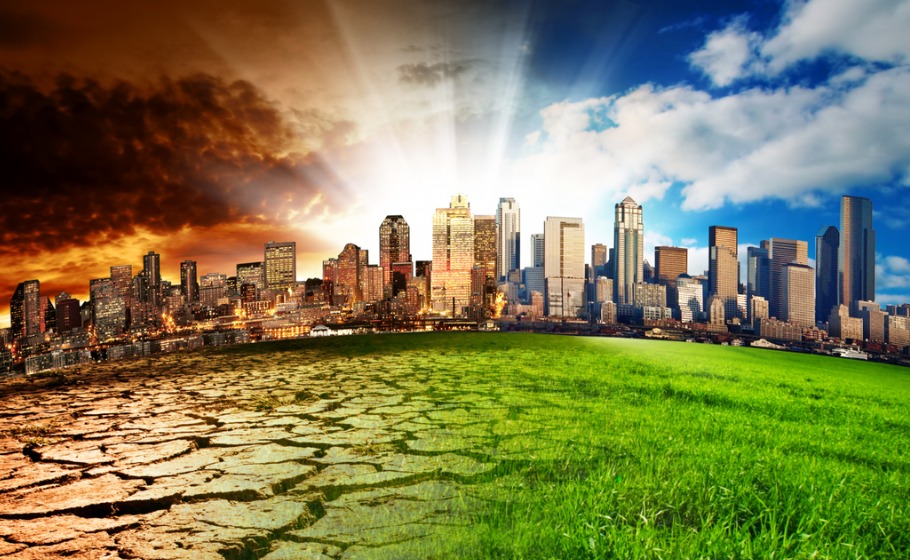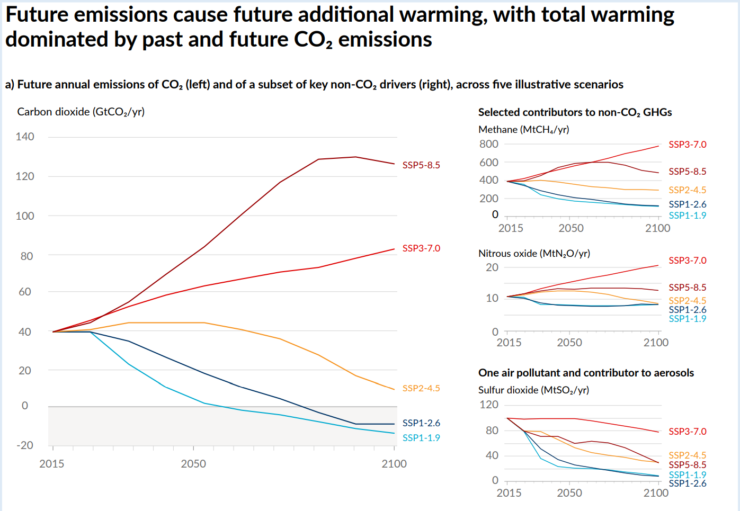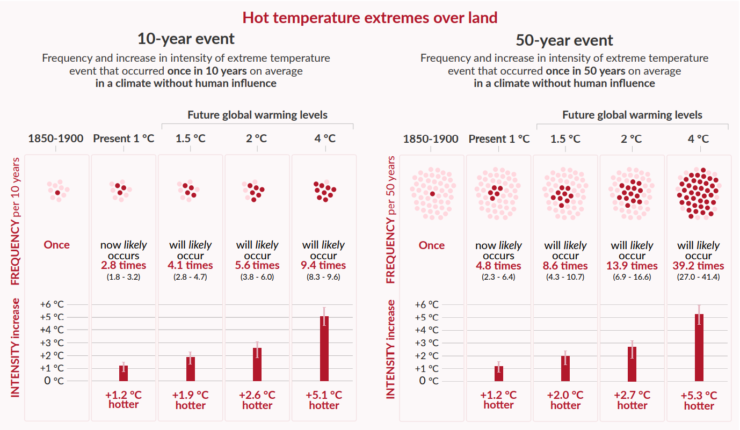
How will warming planet affect India and ways to minimise impact

Our globe is warming faster than we thought as “things get worse” with temperatures rising at a pace much higher than anticipated by world leaders, states a report released by the United Nations Intergovernmental Panel on Climate Change (IPCC) on Monday (August 9).
The IPCC report says that time is running out to limit global temperature below 1.5 degrees Celsius, as envisaged by the Paris Climate Change agreement of 2015. India is among the 195 countries signatory to the pact.
The report suggests five possible scenarios for the future, based on how much carbon emissions are cut. Irrespective of what happens, the world will cross the 1.5 degrees Celsius warming mark in the 2030s, earlier than predicted.
In three scenarios, the world may also exceed 2 degrees Celsius (3.6 degrees Fahrenheit) over pre-industrial times with heat waves, droughts and flood-inducing downpours becoming the norm.
World already warmer by 1.1 degrees Celsius
The report has warned of much severe repercussions unless drastic cuts in emission of CO2 and other greenhouse gases occur in the coming two decades. The IPCC report of 2013 too had blamed climate change on humanity, but this time it has more precise and warmer forecasts to suggest mankind is the cause of climate crisis and has to act fast if human race has to survive.
The Paris Agreement’s main objective is to strengthen the global response to the threat of climate change by keeping a global temperature rise this century well below 2 degrees Celsius above pre-industrial levels and to pursue efforts to limit the temperature increase even further to 1.5 degrees Celsius.

The limit is only a few tenths of a degree hotter than now because the world has already warmed nearly 1.1 degrees Celsius in the past century and a half.
We may not be very lucky and end up with less warming than we thought. We won’t be able to meet Paris Agreement targets without rapid near-term reductions in emissions.
Linda Mearns, a co-author of the latest IPCC report, said, “It’s just guaranteed that it’s going to get worse.”
Mearns, who is a senior climate scientist at the US National Center for Atmospheric Research, said, “I don’t see any area that is safe… Nowhere to run, nowhere to hide. It’s time to get serious because every tonne of CO2 adds to global warming.”
IPCC Vice-Chair Ko Barrett, who is also senior climate adviser for the U.S. National Oceanic and Atmospheric Administration, said the recent changes in climate are widespread, rapid and intensifying, unprecedented in thousands of years.
Fortunately, climate change is no longer looked upon as a hypothetical idea. The latest IPCC report is a comprehensive document with 3,000-plus pages, which warns of rising sea level, shrinking ice and worsening extremes such as heat waves, droughts, floods and storms. It is also evident that tropical cyclones are getting stronger and wetter, while Arctic sea ice is dwindling in the summer and permafrost is thawing. The IPCC report says it will only get worse.
Some changes, like sea level rise, could be “irreversible for centuries to millennia”. The water levels will keep rising all over the world, by up to 55cm under a low emission scenario, and up to 76cm under the current emission trajectory, states the IPCC report.
Consequences for India
Climate change may intensify global water cycle, resulting in violent rain, flash floods and droughts. In South Asia, heatwaves and humid heat stress will become more frequent by the end of the century. A long term impact for the region could be more rainfall all through the year. Glaciers in the Hindu Kush Himalayan region will keep shrinking and snow cover will retreat to higher altitudes, the IPCC report says.
Also read: How can you help fight climate change? Don’t waste food, try upcyling
Due to melting of snow and more rainfall, rivers will get more water. People living downstream may benefit in the short run but in the upper regions it may bring flash floods, avalanches and cloud bursts, just like the one experienced in Uttarakhand and Himachal Pradesh early this year.
In populous countries like India and Bangladesh, rising sea levels could have very severe and long-term repercussions. Increasing salinity intrusion in the Bay of Bengal could invite many more cyclones which could be way more destructive than we have seen so far.

Swapna Panickal, scientist with the Indian Institute of Tropical Meteorology, Pune, and a lead author of the report, said, “About 50 percent of sea level rise is due to thermal expansion, and because the Indian Ocean is warming at a higher rate [than the global average], that means that sea level rise can also increase across the region.”
Panickal warned of more frequent and severe coastal flooding and erosion and extreme events that were previously occurring once in a hundred years, but may now happen every year by the end of the century.
There is still hope though
Petteri Taalas, the head of the World Meteorological Organisation, says we can stop the worst effects of climate change. Governments need to emphasis on climate adaptation, including development of early-warning systems.
Roxy Mathew Koll, a scientist at the Indian Institute of Tropical Meteorology (IITM), Pune, told The Wire that instead of a panel on climate change, we need a panel on climate action.
“While we need all the information on climate change, the focus should now be on how to enable and empower the global community to adapt to these changes. The IPCC remains too careful about getting into controversies by saying ‘okay, we need to take this action’. Maybe from its inception the IPCC was meant to provide scientific facts while remaining apolitical. But at the end of the day, [climate change] is totally political,” he said.
Scientists say that while the picture is gloomy, we should do what we can because every action of our’s will definitely have a positive effect.
Also there is lot that can be done at the individual level. Starting with preventing food wastage, adopting lifestyle changes that are based on low-energy consumption, less pollution and doing everything that has sustainability at its core.

